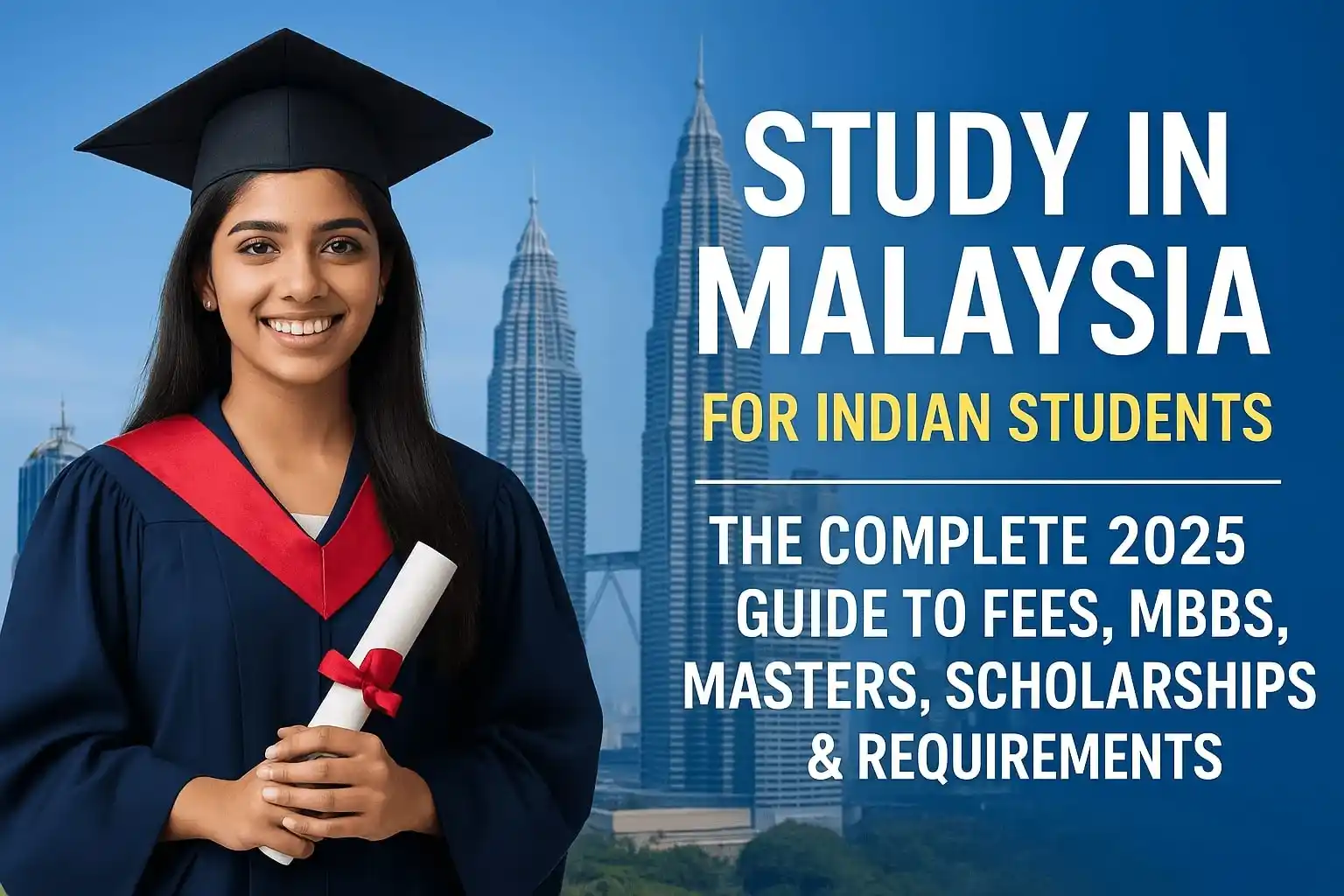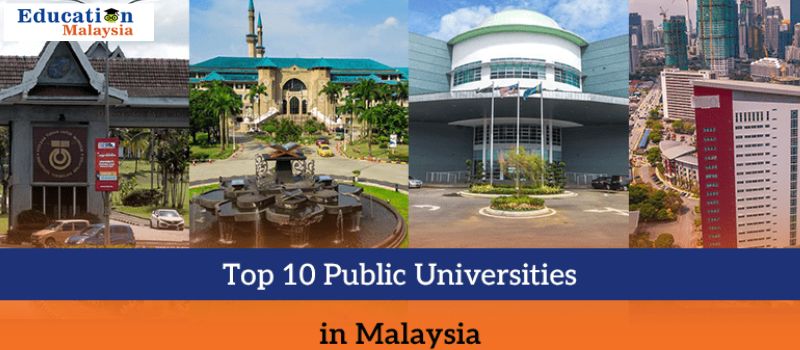- Home
- Blog
- Study Malaysia
- Malaysia Education System 2025 – Complete Study Guide
Malaysia Education System 2025 – Complete Study Guide

Table of Content
- Understanding the Malaysia Education System – Complete Guide 2025
- Introduction to Malaysia Education System
- Structure of the Malaysia Education System
- Higher Education in Malaysia
- Education Levels in Malaysia
- Types of Schools in Malaysia
- Technical & Vocational Education (TVET)
- Government Initiatives for the Education Sector in Malaysia
- Malaysia Education System Facts
- Medium of Instruction in Malaysia
- Quality of Education in Malaysia
- Cost of Studying in Malaysia
- Challenges in the Malaysia Education System
- Opportunities for International Students
- Future of Malaysia Education System (2025–2030)
- Conclusion
Understanding the Malaysia Education System – Complete Guide 2025
The Malaysia education system in 2025 continues to be one of Southeast Asia’s most structured, affordable, and internationally recognised learning models. The system is divided into five main levels: pre-school, primary, secondary, pre-university, and higher education. Children typically begin primary school at age 7, and this stage focuses on strong foundations in languages, mathematics, and science. Secondary education introduces students to academic, vocational, and technical streams, giving them flexibility based on their interests and career goals.
Malaysia follows the KSSM curriculum, which emphasises critical thinking, digital literacy, and innovation. After completing SPM (equivalent to Class 10), students can choose STPM, Matriculation, A-Levels, Foundation programmes, or diploma courses as pathways to higher education.
Higher education in Malaysia is well-developed, with top-ranked public universities, specialised private institutions, and numerous foreign branch campuses such as Monash University and University of Nottingham. These offer globally recognised degrees at comparatively lower costs than countries like the UK or Australia.
In 2025, Malaysia continues to attract thousands of international students due to its affordability, safe environment, multicultural society, and English-based education system. Strong government regulations ensure quality, making Malaysia one of Asia’s most trusted destinations for world-class education.
Introduction to Malaysia Education System
The Malaysia education system is one of the fastest-growing and most internationally recognised systems in Asia. In 2025, it stands out for its structured learning pathway, globally aligned curriculum, and affordability. The system is divided into early childhood, primary, secondary, pre-university, and higher education, ensuring students receive a complete and progressive learning experience. With strong government oversight and continuous reforms, Malaysia offers high-quality education that meets global standards while remaining culturally diverse and student-friendly.
Why Malaysia’s Education System is Gaining Global Attention
Malaysia’s education system is becoming a preferred choice worldwide due to its unique blend of quality and affordability. International students are increasingly choosing Malaysia because the degrees offered—especially those from top public universities and foreign branch campuses—are globally recognised. Malaysia follows an innovative curriculum focusing on technology, digital skills, and critical thinking, preparing students for modern careers. Additionally, the safe environment, multicultural society, and widespread use of English make learning smooth and comfortable for students from different backgrounds. Compared to Western countries, Malaysia provides world-class education at significantly lower tuition and living costs, making it a top study destination
Overview of Malaysia as a Study Destination
Malaysia is known for its modern infrastructure, high-quality universities, and welcoming environment. It hosts reputable institutions, including University Malaya, UTM, and branch campuses like Monash University Malaysia. Students benefit from advanced facilities, diverse programs, and access to global pathways, including 2+1 and 3+0 credit transfer options. Its strategic location in Asia, stable economy, and well-developed student support systems further enhance its appeal.
Importance of Quality Education in Malaysia
Quality education is a national priority in Malaysia. Through strict accreditation by MQA (Malaysian Qualifications Agency) and constant curriculum upgrades, Malaysia ensures that students develop strong academic, technical, and employability skills. This focus on excellence makes Malaysian graduates competitive globally and helps attract thousands of international students each year
Structure of the Malaysia Education System
Malaysia’s education system follows a well-organised structure designed to support students from early learning to higher education. It is divided into early childhood, primary, secondary, post-secondary, and university levels, each focusing on developing academic, social, and practical skills.
Early Childhood Education (Preschool)
Preschool in Malaysia is for children aged 4 to 6 years. It aims to build basic literacy, numeracy, social behaviour, and motor skills. Both government and private preschools follow a curriculum that encourages creativity, communication, and early learning habits, preparing children for primary school.
Primary Education (Standard 1–6)
Primary education lasts six years and focuses on essential subjects such as Bahasa Malaysia, English, Mathematics, and Science. Students develop strong academic foundations, discipline, and problem-solving skills. At the end of Standard 6, students take the UPSR-like assessments, which guide their next steps.
Secondary Education (Form 1–5)
Secondary education is divided into lower secondary (Form 1–3) and upper secondary (Form 4–5).
Lower Secondary
Students study a broad curriculum, including science, math, languages, and life skills. Their performance determines whether they move into academic, vocational, or technical streams.
Upper Secondary (SPM Level)
Form 4–5 students prepare for the SPM exam, equivalent to Class 10/GCSE. This stage allows students to specialise in Science, Arts, or vocational fields, helping them choose future career paths.
Post-Secondary Education (Pre-University)
After SPM, students enter the pre-university stage to qualify for higher education.
STPM
A highly respected national exam, equivalent to A-Levels, lasting 1.5 years
Matriculation
A fast-track 1-year programme preferred for degree admissions.
Foundation Programs
Offered by universities; usually completed in 1 year and tailored to specific fields.
A-Levels & IB
International options for students aiming for global universities, known for academic depth and global recognition
Higher Education in Malaysia
Malaysia has established itself as one of Asia’s most promising higher education hubs, offering globally recognised degrees, modern facilities, and an affordable study environment. The higher education structure is governed by the Ministry of Higher Education (MOHE) and quality-checked by the Malaysian Qualifications Agency (MQA). Students can pursue diplomas, bachelor’s degrees, master’s programs, and PhDs across a wide range of disciplines.
Types of Higher Education Institutions
Malaysia hosts four major categories of higher education institutions, each serving different academic needs and student pathways.
Public Universities
Public universities are government-funded institutions known for strong academic standards, research facilities, and global rankings. Popular public universities include University of Malaya (UM), Universiti Teknologi Malaysia (UTM), Universiti Putra Malaysia (UPM), and Universiti Kebangsaan Malaysia (UKM). They offer bachelor’s to PhD programs and are ideal for students seeking reputable, research-driven education at affordable fees.
Private Universities
Private universities provide specialised programs with modern, industry-focused curricula. They offer flexible pathways, small classroom sizes, and faster academic progression. Some well-known private universities include Taylor’s University, Sunway University, and Heriot-Watt University Malaysia
Foreign University Branch Campuses
Malaysia hosts branch campuses of top global universities, allowing students to earn foreign degrees at significantly lower cost. Examples include Monash University Malaysia, University of Nottingham Malaysia, and Curtin University Malaysia. These institutions follow the same curriculum as their home campuses, making them highly attractive to international students
Colleges & Polytechnics'
Colleges, community colleges, and polytechnics mainly offer diploma, certificate, and skill-based programs. They are suitable for students seeking practical training or pathways to bachelor’s degrees. Polytechnics focus more on technical and vocational skills, supporting Malaysia’s industrial workforce needs.
Types of Higher Education Institutions
Malaysia hosts four major categories of higher education institutions, each serving different academic needs and student pathways.
Public Universities
Public universities are government-funded institutions known for strong academic standards, research facilities, and global rankings. Popular public universities include University of Malaya (UM), Universiti Teknologi Malaysia (UTM), Universiti Putra Malaysia (UPM), and Universiti Kebangsaan Malaysia (UKM). They offer bachelor’s to PhD programs and are ideal for students seeking reputable, research-driven education at affordable fees.
Private Universities
Private universities provide specialised programs with modern, industry-focused curricula. They offer flexible pathways, small classroom sizes, and faster academic progression. Some well-known private universities include Taylor’s University, Sunway University, and Heriot-Watt University Malaysia.
Foreign University Branch Campuses
Malaysia hosts branch campuses of top global universities, allowing students to earn foreign degrees at significantly lower cost. Examples include Monash University Malaysia, University of Nottingham Malaysia, and Curtin University Malaysia. These institutions follow the same curriculum as their home campuses, making them highly attractive to international students.
Colleges & Polytechnics
Colleges, community colleges, and polytechnics mainly offer diploma, certificate, and skill-based programs. They are suitable for students seeking practical training or pathways to bachelor’s degrees. Polytechnics focus more on technical and vocational skills, supporting Malaysia’s industrial workforce needs.
Popular Bachelor’s, Master’s & PhD Programs
Higher education institutions in Malaysia offer a vast range of internationally recognised programs:
| Level | Programs |
|---|---|
| Bachelor’s Programs |
|
| Master’s Programs |
|
| PhD Programs |
|
| Note: Malaysia’s PhD programs emphasize research output, innovation, and publication quality. | |
Education Levels in Malaysia
Malaysia’s education system is designed to provide a clear, progressive learning pathway from preschool to higher education. Each stage focuses on building academic knowledge, character development, and skills required for future studies or employment. The structure is flexible enough to support different career ambitions while maintaining strong national education standards.
Complete Breakdown of All Education Stages
Malaysia’s education system consists of five main stages:
Early Childhood Education (Preschool):
For children aged 4–6, focusing on basic literacy, numeracy, and social skills.
Primary Education (Standard 1–6):
A six-year compulsory stage that builds strong foundations in languages, mathematics, and science.
Secondary Education (Form 1–5):
Divided into lower secondary (Form 1–3) and upper secondary (Form 4–5), ending with the SPM examination.
Post-Secondary / Pre-University:
Includes STPM, Matriculation, Foundation, A-Levels, and diploma programmes, preparing students for university.
Higher Education:
Covers diploma, bachelor’s, master’s, and doctoral levels offered by universities, colleges, and polytechnics.
Age Groups, Duration & Institution Types
- Preschool: 4–6 years (Kindergartens, private & government)
- Primary School: 7–12 years (National and vernacular schools)
- Secondary School: 13–17 years (Public, private & vocational schools)
- Pre-University: 17–19 years (STPM, matriculation, foundation, A-levels)
- University: 18+ years (Universities, colleges, and polytechnics)
Education Levels in Malaysia at a Glance
| Education Level | Age Range | Duration | Institution Type |
|---|---|---|---|
| Preschool | 4–6 | 2 years | Kindergartens / Preschools |
| Primary | 7–12 | 6 years | National & Vernacular Schools |
| Lower Secondary | 13–15 | 3 years | Public & Private Schools |
| Upper Secondary (SPM) | 16–17 | 2 years | Public / Private / Vocational |
| Pre-University | 17–19 | 1–2 years | STPM, Matriculation, Foundation, A-Levels |
| Higher Education | 18+ | 2–8 years | Universities, Polytechnics, Colleges |
Types of Schools in Malaysia
Malaysia offers a diverse schooling system designed to meet the needs of different communities, cultures, and academic goals. From government-run national schools to globally recognised international institutions, each type of school provides unique learning experiences. This variety makes Malaysia one of the most flexible and student-friendly education systems in Asia.
National Schools
National schools, also known as Sekolah Kebangsaan (SK), follow the national curriculum and use Bahasa Malaysia as the main medium of instruction. English is taught as a second language, while subjects like mathematics, science, and history follow MOE (Ministry of Education) guidelines. These schools promote unity, discipline, and multicultural values. They are government-funded, making education accessible and affordable.
Vernacular Schools (Chinese & Tamil Schools)
Vernacular schools cater to Malaysia’s major ethnic groups.
- SJK(C) – Chinese-medium schools teach in Mandarin.
- SJK(T) – Tamil-medium schools teach in Tamil.
Both offer the national curriculum but emphasise mother-tongue language proficiency and cultural values. These schools are known for strong academic focus, especially in mathematics and science.
Private Schools
Private schools follow the national curriculum but have enhanced facilities, smaller class sizes, and modern teaching approaches. Many private schools also offer elective subjects like robotics, ICT, foreign languages, and advanced English programmes. They attract parents seeking a balanced environment with both academics and co-curricular development.
International Schools (IB, Cambridge, American System)
International schools follow globally recognised curricula such as IGCSE (Cambridge), IB, or the American High School System. These schools focus on critical thinking, creativity, and global exposure. They are popular among expatriates and Malaysian families wishing to prepare their children for foreign universities.
Homeschooling & Alternative Learning
Homeschooling is becoming increasingly popular due to its flexibility. Parents can choose curricula like Cambridge IGCSE, American GED, or customised modules. Alternative learning centres also focus on skill-based education, personalised learning plans, and student-paced progress, offering a modern approach to education.
Technical & Vocational Education (TVET)
Technical and Vocational Education and Training (TVET) is an essential part of Malaysia’s education system, designed to equip students with hands-on skills for real-world industries. It provides practical training, industry exposure, and job-ready competencies, making it a powerful alternative to traditional academic pathways
Importance of TVET in Malaysia
TVET plays a major role in supporting Malaysia’s economic growth. As the country moves toward becoming a high-income nation, there is increasing demand for skilled technicians, engineers, healthcare assistants, and digital professionals. TVET fills this gap by offering career-focused training that directly aligns with industry needs. It also provides opportunities for students who prefer practical learning instead of theory-heavy academic programmes.
Popular Vocational Fields
Malaysia offers a wide range of TVET programmes across thriving sectors. Popular fields include:
- Automotive Technology
- Electrical & Electronics Engineering
- Hospitality & Tourism
- Culinary Arts
- Information Technology (IT)
- Healthcare Support Services
- Construction & Welding
These programmes provide hands-on workshops, lab training, and industrial attachments to ensure students gain real experience.
Government Initiatives to Boost TVET
The Malaysian government has introduced multiple initiatives to strengthen TVET. These include expanding TVET colleges, offering financial aid, partnering with industries for training, and upgrading curriculum standards. The government also aims to produce more certified technicians through initiatives like TVET Malaysia, sector skill councils, and employer-driven apprenticeships.
TVET vs Degree Programs – What Students Should Choose?
Choosing between TVET and degree programmes depends on a student’s strengths and career goals.
- Choose TVET if you prefer practical training, want to join the workforce faster, or aim for skill-based careers.
- Choose a degree if you want academic depth, research opportunities, or professional roles like engineering, business, or medicine.
Government Initiatives for the Education Sector in Malaysia
Malaysia places strong emphasis on continuously upgrading its education system to meet global standards. Through strategic planning, digital advancement, and financial support, the government ensures that all students—urban or rural—receive access to quality education. Several national initiatives have shaped the modern Malaysian education framework, supporting innovation, inclusivity, and long-term development.
Malaysia Education Blueprint (2013–2025)
The Malaysia Education Blueprint is one of the most impactful reforms in the country’s education history. Covering all levels from preschool to post-secondary, the blueprint outlines 11 key shifts to improve student outcomes and teacher quality. Its goals include strengthening STEM education, enhancing English proficiency, improving school leadership, promoting holistic learning, and ensuring equal access for all communities. As the blueprint reaches its final phase in 2025, it has significantly modernized the education system and increased Malaysia’s global competitiveness.
Digital Transformation in Schools
To prepare students for the digital economy, Malaysia has accelerated ICT integration across schools. The government introduced smart classrooms, virtual learning platforms, digital textbooks, and nationwide internet access through the 1BestariNet initiative. Schools now emphasize coding, robotics, and digital literacy to equip students with future-ready skills. This transformation ensures that Malaysian education remains aligned with global technological progress.
Scholarships and Financial Aid
Malaysia offers a range of scholarships and financial assistance programs through ministries, universities, and private organisations. Notable schemes include PTPTN, MARA Education Loans, and scholarships for international students. These initiatives help reduce financial barriers and make higher education accessible to all deserving students.
Improving Infrastructure in Rural Schools
The government continues to upgrade rural and remote schools by improving classrooms, providing better transportation, enhancing teacher training, and ensuring stable internet connectivity. These efforts aim to close the urban-rural education gap and offer equal learning opportunities nationwide.
Malaysia Education System Facts
Key Statistics & Achievements
Malaysia’s education system has shown consistent growth over the past decade, supported by strong government policies and international collaborations. The country hosts over 150 higher education institutions, including public universities, private universities, and foreign branch campuses. Malaysia also attracts more than 100,000 international students each year, positioning itself as one of Asia’s leading education hubs. Several Malaysian universities have secured places in global rankings such as QS World University Rankings and Times Higher Education. Continuous advancements in STEM learning, TVET expansion, and digital classrooms highlight Malaysia’s commitment to international quality education.
Facts About Student Population & Skilled Workforce
Malaysia has a diverse student population across all education levels. With a strong focus on skill development, the government promotes technical, vocational, and industry-driven programs. This has led to a significant rise in TVET enrolments and job-ready training, creating a future-focused workforce. Engineering, IT, business, and healthcare programs remain among the most popular choices among students. Malaysia’s young population and increasing digital literacy contribute to its aim of building a highly skilled workforce aligned with global industry needs.
Global Recognition of Malaysian Education
Malaysia is widely recognized as an affordable and high-quality international study destination. Many universities offer twinning and dual-degree programs with prestigious institutions from the UK, USA, and Australia. These globally recognized qualifications allow students to study in Malaysia at a much lower cost while maintaining international standards. With multicultural campuses, modern infrastructure, and excellent safety records, Malaysia continues to strengthen its reputation as a reliable global education hub.
Medium of Instruction in Malaysia
Bahasa Malaysia
Bahasa Malaysia is the national language and one of the primary mediums of instruction in Malaysian schools, especially in government or national schools. Subjects such as history, moral education, and social studies are typically taught in Bahasa Malaysia. The use of the national language helps promote unity, cultural identity, and ease of understanding for local students. It also ensures that students gain strong proficiency in the language, which is essential for communication in daily life, government sectors, and local workplaces.
English
English plays a significant role in Malaysia’s education system and is widely used as a second language. Many subjects, especially science and mathematics, are often taught in English in both public and private schools. At the higher education level (colleges and universities), English is the main medium of instruction for most programs, making it easier for international students to study in Malaysia. The strong emphasis on English enhances global competitiveness and prepares students for international job markets and higher academic opportunities abroad.
Mandarin & Tamil
In vernacular schools, Mandarin and Tamil are used as the primary languages of instruction. Chinese national-type schools (SJKC) teach the majority of subjects in Mandarin, while Tamil national-type schools (SJKT) use Tamil. These schools help preserve cultural heritage, values, and linguistic identity among Chinese and Indian communities in Malaysia. Students also learn English and Bahasa Malaysia as compulsory subjects, allowing them to become multilingual and culturally aware.
Bilingual Education Advantages
Malaysia’s multilingual education system offers significant advantages. Students grow up learning at least two or three languages, which improves cognitive development, critical thinking, and communication skills. The combination of Bahasa Malaysia, English, and vernacular languages allows students to adapt easily in ASEAN countries and international environments. Bilingual and multilingual proficiency also enhances employability, as global companies value graduates who can communicate across cultures. Overall, Malaysia’s medium of instruction promotes diversity, flexibility, and global readiness
Quality of Education in Malaysia
Why Malaysia Offers Good Quality of Education
Malaysia provides high-quality education due to strong government policies, continuous reforms, and global collaborations. Its education standards are aligned with international benchmarks, ensuring students receive globally relevant learning. Public and private universities in Malaysia often partner with top universities in the UK, Australia, and the USA to provide recognized degrees with updated curriculum frameworks. Affordable fees, modern campuses, and high teaching standards make Malaysia a preferred choice for both local and international students.
Learning Environment & Teaching Methods
The learning environment in Malaysia emphasizes student-centered education. Schools and universities focus on interactive teaching approaches such as group discussions, project-based learning, presentations, and practical training. Teachers use modern teaching techniques that encourage creativity, problem-solving, and critical thinking. Classrooms are designed to support collaborative learning, enabling students to develop both academic and personal skills. The multicultural environment also promotes respect, teamwork, and cross-cultural communication.
Infrastructure: Labs, Libraries, Technology
Malaysia’s education infrastructure is one of the best in Southeast Asia. Institutions are equipped with advanced laboratories, digital libraries, research centers, modern classrooms, and high-speed internet. Universities invest in simulation labs, engineering workshops, medical facilities, and IT labs to provide real-world training. Schools increasingly adopt digital learning tools such as smart boards, online platforms, and e-learning portals, preparing students for the digital future.
International Partnerships & Twinning Programs
Malaysia is globally known for its international partnerships and twinning programs. Many universities offer 2+1 or 3+0 programs with top institutions in countries like the UK, Australia, and the US. This allows students to complete part or all of their degree at an international standard without paying high overseas tuition fees. Such programs ensure global curriculum, international exposure, and better job opportunities worldwide. These partnerships significantly enhance Malaysia’s educational reputation and attract students from more than 160 countries.
Cost of Studying in Malaysia
Tuition Fees Comparison
Malaysia is one of the most affordable study destinations for international students. Tuition fees are significantly lower compared to countries like the UK, USA, and Australia while maintaining high academic standards. For diploma and bachelor’s programs, annual fees generally range from RM 10,000 to RM 25,000, depending on the course and university. Engineering, IT, and business programs fall in the mid-price range, while medical and aviation programs are higher but still cheaper than Western countries. Many Malaysian universities also offer twinning and 3+0 degree programs, allowing students to earn globally recognized degrees at a fraction of the cost.
Living Costs for Students
Malaysia’s living cost is one of the lowest among major education hubs. On average, international students spend RM 1,200 to RM 2,000 per month, including accommodation, food, transport, utilities, and entertainment. Affordable public transport, subsidized student meals, and low rental rates make Malaysia a budget-friendly destination. Students can choose between on-campus hostels and private apartments, both of which are reasonably priced. Compared to big cities like London, Sydney, or New York, Malaysia offers a high quality of life at almost one-third of the cost, making it ideal for budget-conscious students.
Malaysia vs UK/USA/Australia – Cost Comparison
The cost comparison clearly shows Malaysia’s affordability. For example, average annual tuition fees in the UK range from RM 80,000–RM 1,00,000, in Australia RM 70,000–RM 1,20,000, and in the USA RM 1,00,000–RM 2,00,000. Meanwhile, Malaysia offers the same degrees between RM 10,000–RM 40,000. Similarly, monthly living expenses in Western countries range between RM 5,000 to RM 8,000, while Malaysia maintains affordability under RM 2,000. This huge difference attracts thousands of students seeking global-quality education on a practical budget.
| Category | Malaysia | UK | USA | Australia |
|---|---|---|---|---|
| Annual Tuition Fees (Bachelor’s) | RM 10,000 – RM 25,000 | RM 80,000 – RM 100,000 | RM 100,000 – RM 200,000 | RM 70,000 – RM 120,000 |
| Annual Tuition Fees (Master’s) | RM 15,000 – RM 35,000 | RM 90,000 – RM 120,000 | RM 120,000 – RM 240,000 | RM 80,000 – RM 130,000 |
| Medical Degree Costs | RM 50,000 – RM 100,000 per year | RM 200,000+ per year | RM 250,000+ per year | RM 180,000+ per year |
| Monthly Living Cost | RM 1,200 – RM 2,000 | RM 5,000 – RM 8,000 | RM 6,000 – RM 10,000 | RM 5,000 – RM 7,000 |
| Hostel/Accommodation (Monthly) | RM 300 – RM 800 | RM 2,000 – RM 3,500 | RM 2,500 – RM 4,000 | RM 1,800 – RM 3,000 |
| Food & Dining (Monthly) | RM 400 – RM 700 | RM 1,500 – RM 2,500 | RM 1,500 – RM 3,000 | RM 1,200 – RM 2,500 |
| Transport (Monthly) | RM 100 – RM 200 | RM 600 – RM 900 | RM 500 – RM 1,000 | RM 400 – RM 800 |
| Overall Annual Cost (Tuition + Living) | RM 25,000 – RM 45,000 | RM 1,40,000 – RM 2,00,000 | RM 1,80,000 – RM 3,00,000 | RM 1,30,000 – RM 2,20,000 |
| Savings When Choosing Malaysia | Up to 70–80% cheaper | — | — | — |
Challenges in the Malaysia Education System
Rural vs Urban Gap
One of the major challenges Malaysia faces is the educational gap between rural and urban regions. Urban schools enjoy modern facilities, trained teachers, digital classrooms, and structured learning environments. In contrast, many rural schools struggle with limited resources, outdated infrastructure, teacher shortages, and slower technological adoption. This imbalance influences student performance, access to opportunities, and digital readiness. The government is actively working to improve rural school facilities, but the gap still remains a priority challenge.
Need for More Skilled Graduates
Malaysia aims to become a high-income nation, which requires a strong skilled workforce. However, industries often report a shortage of graduates with practical skills, problem-solving ability, and hands-on experience. While academic knowledge is strong, students sometimes lack employability skills such as communication, teamwork, and technical expertise. This has increased the focus on TVET, internships, and industry-linked programs to develop job-ready graduates who meet market demands.
Digital Divide & Technological Limitations
Although Malaysia is pushing towards digital transformation, a digital divide still exists among schools and households. Some students lack access to laptops, stable internet, or advanced digital tools, especially in rural regions. During the pandemic, this divide became more visible as online education was difficult for many families. To overcome this challenge, Malaysia is investing in high-speed internet expansion, smart classrooms, and digital literacy programs for teachers and students.
Competition with Global Universities
As Malaysia positions itself as an international education hub, it faces strong competition from established destinations like the UK, Australia, Europe, and Singapore. These countries offer long-established academic reputations and attract top-tier students globally. To stay competitive, Malaysian institutions must continuously upgrade faculty quality, research output, international rankings, and global partnerships. The focus is shifting towards strengthening postgraduate research, innovation, and world-class academic programs to attract international talent
Opportunities for International Students
Scholarships & Grants
Malaysia provides a wide range of scholarships and financial assistance options for international students, making education more affordable and accessible. Various universities offer merit-based scholarships, partial fee waivers, and special international student bursaries for high achievers. Government bodies like the Malaysia International Scholarship (MIS) also support talented students in postgraduate programs. Many private universities provide up to 30%–50% tuition fee reductions based on academic excellence, extracurricular achievements, or early-bird admissions. These scholarships attract students from Asia, Africa, and the Middle East, helping them pursue quality education without financial burden.
Internships & Industrial Training
Malaysia’s education system strongly focuses on practical, job-ready skills. Most degree programs include internships, industrial placements, or cooperative training, giving students real-world exposure. Industries such as IT, engineering, business, hospitality, and healthcare offer structured internship programs. International students benefit from working with multinational companies like Intel, Samsung, Dell, HSBC, and Petronas. These internships improve employability, develop soft skills, and allow students to build strong professional networks before graduation.
Easy Admissions & Visa Support
Malaysia is known for its smooth and student-friendly admission process. The entry requirements are straightforward, documentation is minimal, and application processing is quick. The EMGS (Education Malaysia Global Services) system ensures fast and transparent student visa approvals—usually within 2–4 weeks. Universities provide full support throughout the visa process, including medical insurance, arrival guidance, and accommodation arrangements. This efficient ecosystem makes Malaysia one of the easiest countries for international students to transition into.
Pathway Programs (2+1, 3+0, Twinning Systems)
Malaysia is globally recognised for its twinning and pathway programs, where students study part of the degree in Malaysia and complete the remaining abroad. For example, a 2+1 program allows students to do two years in Malaysia and one year in the UK or Australia. The 3+0 program enables students to earn a UK or Australian degree entirely in Malaysia at a much lower cost. These pathways provide affordable access to world-class universities while ensuring global exposure and recognized qualifications.
Future of Malaysia Education System (2025–2030)
AI-Based Learning Enhancements
Between 2025 and 2030, Malaysia is expected to integrate Artificial Intelligence (AI) deeply into its education system. AI-driven tools will personalize learning, track student progress, and create smart classrooms with automated assessments. Schools will adopt AI-based tutoring, virtual labs, and adaptive learning platforms to support students at different skill levels. This digital shift will enhance student engagement, reduce learning gaps, and upgrade Malaysia’s overall academic quality.
Malaysia's Goal to Become a Top 10 Global Education Hub
The government aims to position Malaysia among the Top 10 Global Education Hubs by 2030. Continuous improvements in university rankings, expansion of international partnerships, and increased research output are helping Malaysia move closer to this goal. More foreign university branch campuses are expected, along with improved global accreditation standards. These initiatives will strengthen the country’s international reputation and attract global talent.
Increasing Number of International Students
Malaysia currently hosts over 100,000 international students, and this figure is expected to reach 200,000+ by 2030. Affordable education, multicultural society, and globally recognized degrees continue to make Malaysia a preferred study destination. New visa-friendly policies, more scholarships for foreign students, and improved campus facilities will further boost international enrolments in the coming years.
Digital Universities & Online Learning Growth
The future of Malaysian education will be heavily digitalized. Universities are moving towards hybrid, online, and micro-credential programs to meet global demand. Virtual campuses, online labs, and remote learning technologies will provide flexible education for local and international learners. Digital universities will also collaborate with global EdTech platforms, offering industry-aligned courses and certifications. This shift ensures Malaysia remains competitive in the fast-changing global education landscape.
Conclusion
Summary of Malaysia’s Education Strengths
Malaysia’s education system stands out due to its strong academic foundation, affordable study options, and globally recognized institutions. From early schooling to higher education, the system is structured, modern, and constantly improving through government initiatives and international collaborations. The presence of public universities, private universities, and foreign branch campuses ensures a wide variety of programs for students worldwide. Malaysia also excels in offering English-medium education, advanced infrastructure, practical training opportunities, and flexible pathway programs like 2+1 and 3+0. With a focus on digital transformation, AI-driven learning, and skill-based education, the country is preparing students for global careers in an increasingly competitive world
Why Malaysia Has Become a Preferred Study Destination
Malaysia has quickly become one of the most preferred destinations for international students due to its affordability, quality of life, and multicultural environment. Students enjoy world-class education at a fraction of the cost compared to Western countries, along with easy visa processes, safe living conditions, and diverse cultural experiences. The country’s strong focus on employability, industry partnerships, and internship opportunities further adds to its appeal. With a welcoming atmosphere, globally recognized degrees, and continuous advancements in education technology, Malaysia offers the perfect blend of quality, affordability, and global exposure — making it an ideal destination for students worldwide













